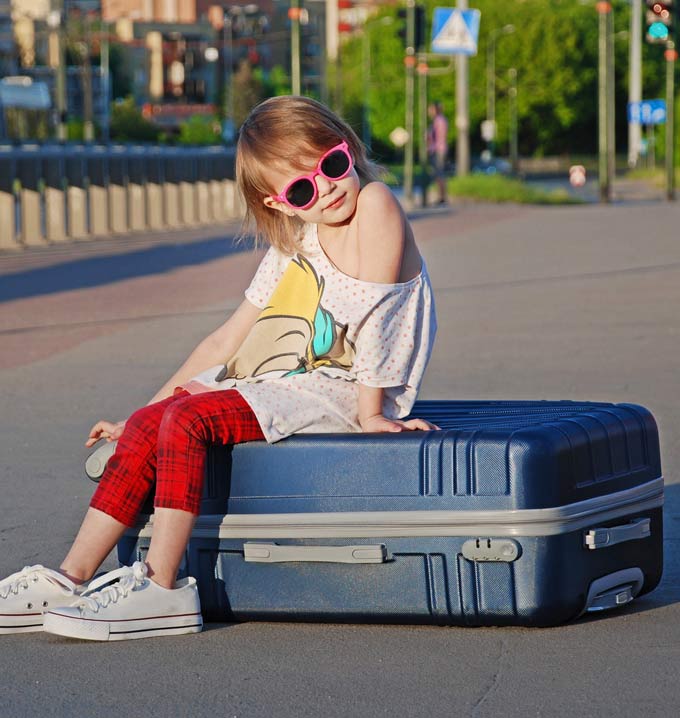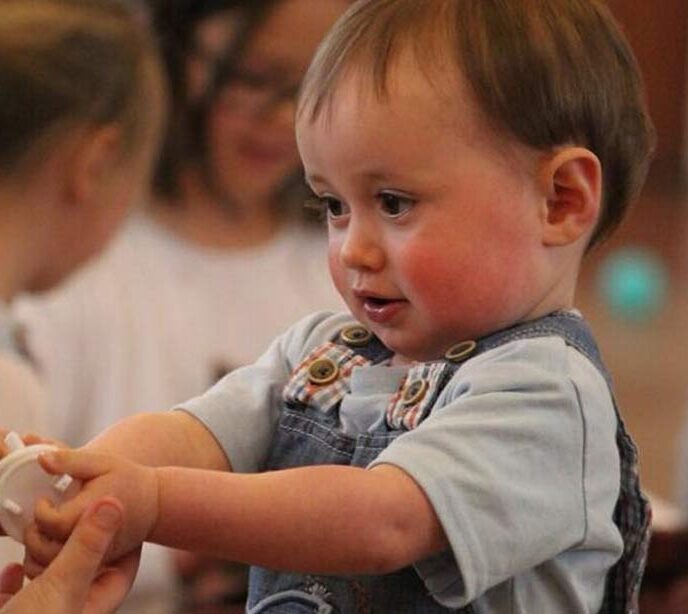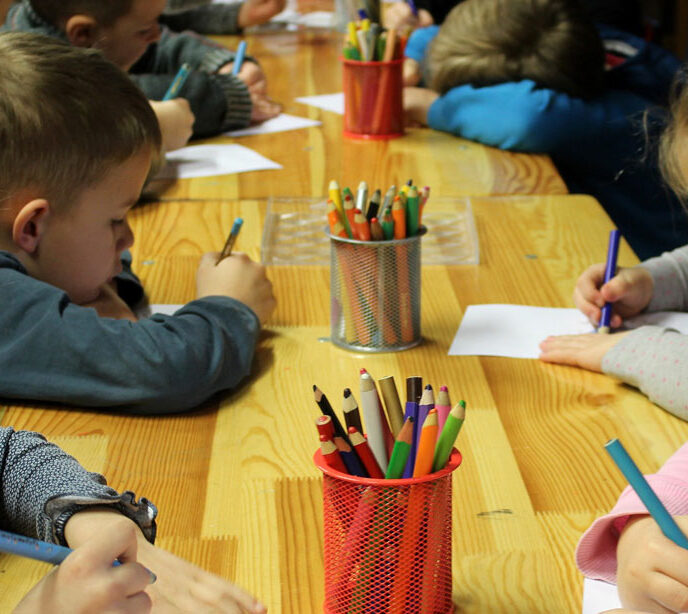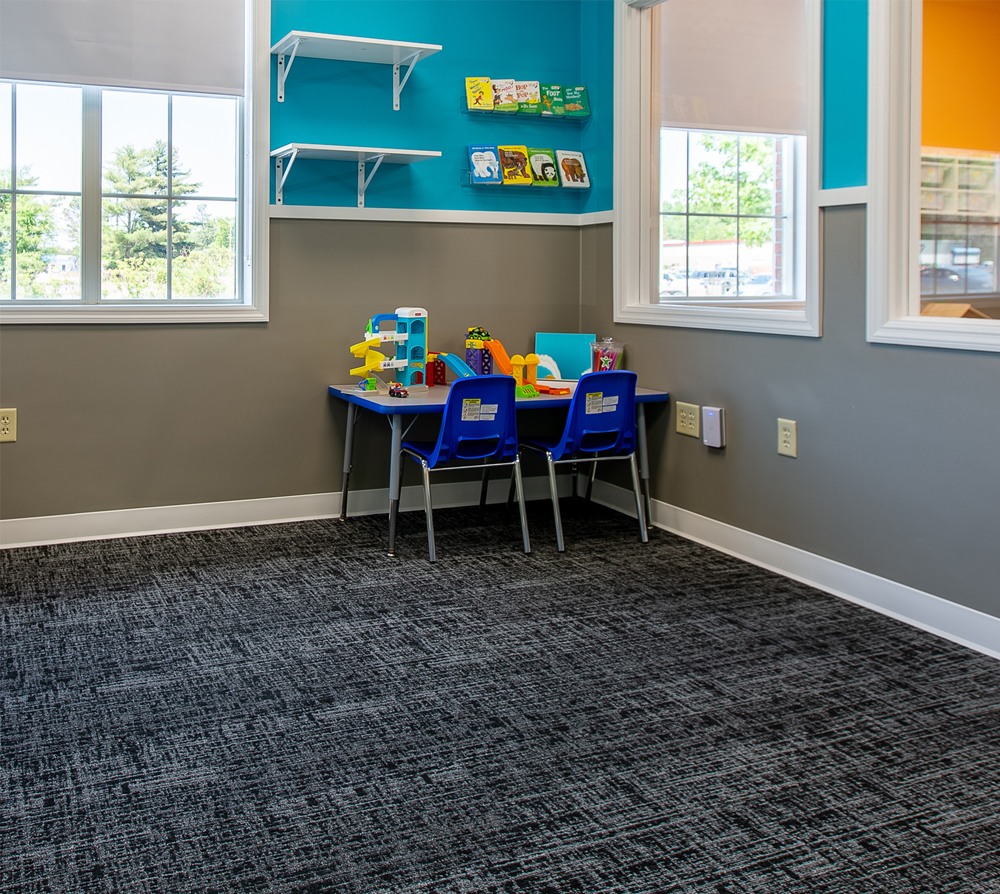Traveling with an Autistic Child
Preparing for a Trip with Autistic Children
When you’re making any travel plans, preparation is key. The small bit of extra planning can make a huge difference in ensuring everything runs more smoothly. But, when you’re traveling with an autistic child, there are additional factors that can make travel more challenging, from finding autism-friendly vacation spots to transport options and even insurance. Taking time to plan around your child’s needs can help reduce some of that stress, lower risks, and set the stage for a trip that feels more enjoyable for everyone.

Getting Ready for a Smoother Trip
Autism and vacations aren’t usually thought to fit together well. After all, for many autistic children, routine changes and new places can be intimidating experiences. This is why, while planning any family trip or vacation is always fun, it can also be incredibly stressful. When your child is autistic, there are more details to think through, and that is completely normal. A bit of thoughtful planning helps you focus on what matters most – time together – while keeping your child’s comfort and safety front and center.
From managing your and your child’s autism-related travel anxiety to ensuring their safety and comfort in new environments, here are a few tips on how to reduce risks and increase the fun on your next trip.
Planning the trip
The planning phase of the trip is crucial for creating the best autism-friendly vacation experience. Putting in a little extra work up front can make the whole journey easier. It helps you feel confident about each step and gives your child the predictability they need to enjoy the experience.
Research your destination
Before you book anything, research your destination to ensure that it is suitable for your child. Find a destination that can give you the best family vacation with autism-friendly accommodations in place. Highly stimulating experiences like amusement parks, playgrounds, and performance venues can be overwhelming for children, especially those living with sensory overload.
Consider destinations like Sesame Place, which was the world’s first theme park to be designated as a certified autism center. They have trained staff who are knowledgeable about autism and how to provide support to individuals with sensory sensitivities, as well as sensory guides to help families plan their visit and navigate the park. There are also quiet rooms where visitors can take a break from the noise and crowds and have some downtime.
You can also look for quieter options. Sometimes, the simplest destinations and activities can make the best vacations for kids with autism, such as smaller beach towns, state parks, or less-crowded museums, which often offer more space and calmer environments. Calling ahead to ask how they support autistic visitors can give you a clearer picture of what to expect.
Here is a comprehensive list of questions you can forward to any prospective destination to assess their readiness to host you and your child:
· Can you tell me how long the wait times are?
· Where can we find our room or seat?
· How long does the program, event, or attraction typically last?
· What sets your location apart from others like it?
· Do you offer sensory guides for your guests?
· What type of training do your employees undergo, if any?
· Are there any times when staff members won’t be available to assist me?
· Do you have any employees who specialize in autism?
· How many people are usually around?
· Is the street typically busy?
· What kind of view can we expect from our room or seat?
· How noisy is it usually?
· Is it generally quiet during the night?
· Is it hot and humid outdoors?
· What material are the seats/linen made of? Cloth, leather, or plastic?
· Is it possible to receive a menu beforehand?
· Am I allowed to bring my own food?
· What kind of food substitutions are allowed?
· How far away is our room from the pool and kitchen?
· Do you use scented detergents or cleaners in the rooms?
· Where is the garbage and waste collected, and how often is it done?
· Is there a designated area where I can take my child if they become overwhelmed?
· How easy is it to get to that space?
· What safety procedures do you have in place in case of a medical emergency?
Special Travel Insurance
Autism travel insurance is a type of travel insurance that’s specially designed to provide extra coverage and protection for people with autism when they’re traveling. Beyond normal travel coverage, special autism travel insurance can also cover additional expenses that may arise due to autism-related incidents.
For example, if an autistic individual experiences a behavioral or sensory meltdown during their trip, the insurance can help cover any costs associated with that incident, like the cost of a hotel room or a medical professional’s assistance. Knowing this support exists can ease worry and let you focus more on enjoying time together.
Autism Travel Card
An autism travel card is a special card or document that autistic children should carry when they travel. It helps to let transportation officials and other service providers, like hotel staff, know that your child is autistic and might need some extra help or accommodations during their trip.
The card usually has basic information like their name, age, and picture, along with details about their sensory needs, communication preferences, and any other support they might need. Combine the card with a list of your child’s specific issues so that if they get lost or wander off, adults who find them are able to respond accordingly.
Keep the card in an easy-to-reach place, like a badge holder or front pocket, so it is available right away if needed.
Different organizations or agencies might have their own version of the card, but they all serve the same purpose.
Preparing Your Child
This is perhaps the most important aspect of the trip. Both you and your child may be entering an unfamiliar environment, which can spark anxiety and serious behavioral reactions.
Ensuring that your child is well prepared and ready to tackle these new challenges and changes to routine and environment will go a long way to making their and your trip enjoyable. Preparation helps the new feel more predictable, which can lower stress for your child and for you.
Create a Schedule and Social Story
Detailed schedules should include the travel process, holiday activities, meals, and breaks. This will help your child feel more comfortable and reduce anxiety.
It’s a great idea to illustrate the schedule in a picture and/or word social story. This will help them understand what to expect and feel more comfortable with the unfamiliar experience.
Include pictures or descriptions of all aspects of the trip, especially when you combine autism and air travel. Make sure to illustrate security processes, the terminal, the airplane, hotel/accommodation, activities, and various other aspects of your journey. You can also add sensory experiences that your child may encounter during the trip, such as ear-popping during takeoff and landing.
These concepts require reinforcement. A useful technique is to get your child to explain the schedule back to you repeatedly. You can also mark the departure date on a calendar at least three weeks before and get them to mark each day off. A simple countdown can build comfort and excitement at the same time.
Additional Training
If you find your homespun efforts are falling a little short, then consider travel training for autism, a program that helps autistic children learn how to travel in a more structured way. It teaches them many of the skills and knowledge they need to be able to navigate the trip, while also helping prepare you as a parent.
Travel training programs do vary, but they usually include a mix of classroom instruction and hands-on training. These could include exposure therapy, where the child can be acclimated to certain sensory stimuli like sand, snow, escalators, or even the feel of wearing a bathing suit. Short practice outings, like visiting a busy store for a few minutes and then leaving on a positive note, can also build confidence
On the way
Release Pent-Up Energy
Travel often requires long periods of sitting still and being quiet, which can be challenging for children who have a lot of energy. To help your child relieve any pent-up energy before departure, encourage them to engage in high motor activity.
Activities that involve gross motor movements, such as running or jumping on a trampoline, for approximately 20 minutes, can be especially helpful. This type of activity can help your child release energy and reduce feelings of restlessness, making it easier for them to remain calm and comfortable during the journey. Many airports now have children’s play spaces that would be ideal for a pre-flight activity session. For road trips, plan short movement breaks so your child can stretch, reset, and get back in the car feeling better
Bring Items of Comfort Along
Comforting items from home, such as a favorite blanket or toy, help your child feel more at ease in unfamiliar surroundings. You should also consider not washing certain items to keep the smell of home constantly present as a comfort in times of distress.
Sensory Supplies
A good idea is to keep a bag of supplies in the car based on what you know about your child’s needs and their sensory sensitivities. Consider giving your child a small backpack with items they can access on their own as well.
Include sensory blockers like headphones to help with noise hypersensitivity. Other helpful items for sensory relief can include portable fans, hand sanitizer, and moisture-wicking towels. Pack a few favorites you know work well at home so your child has familiar tools on hand.
While You’re There
Once you arrive at your destination, it is important to reinforce much of the preparation that was done with your child and ensure that the venue/accommodation can deliver on what was presented. You also need to be prepared for any eventuality you may not have considered.
Give yourself permission to slow the pace when needed and build in extra time between activities.
Establish a Routine
Keeping a familiar structure during travel can make transitions easier for your child. If your trip takes place in the warmer months, maintaining a summer routine can also help your child feel balanced and more comfortable throughout the vacation.
On arrival, it is important to remind your child of all the preparation that was done and then establish a routine for the rest of the vacation. Use all the tools you would at home to make them immediately comfortable in the new space, and put up the schedule you prepared as a visual reference
Plan for Sensory Breaks
The reality is, even though a family trip is a time for fun, relaxation, and trying new activities, your child may need breaks from sensory stimulation. So, while it’s great to have fun activities and interesting destinations in your travel plans, it’s also important to plan for quiet or calming
activities during the trip. This can include activities like reading, drawing, or playing with sensory toys. Assuming you booked at a certified autism center, the resort, hotel, or park may offer specially-designed facilities for this.
If your vacation involves time around water, it may help to learn about programs that address autism drowning risks and focus on water safety for autistic children.
Inform All Service Providers
Let hotel staff and tour guides know about your child’s needs in advance so they can be prepared to provide any necessary accommodations. It is, however, important to remind them when you arrive and during the stay, as staff can rotate, or your instructions may not make it all the way down to the cleaners, waiters, and other service staff. If possible, ask for a main point of contact who can help make sure requests are shared with the rest of the team.
Have a Backup Plan
With all the planning and preparation in the world, there will always be situations that you cannot anticipate. In these cases, you need an emergency backup plan to mitigate any unforeseen stimuli, changes, or triggers that could overwhelm your child.
This could include returning to your hotel room for a break or finding a quiet, less stimulating activity. To avoid unnecessary anxiety and distress, be prepared to stop any activity immediately to limit the impact on both you and your child. Talking through backup options with your child ahead of time can also make those moments feel calmer.
Lighthouse Autism Center, a Partner on your Autism Journey
Planning for any changes in your child’s life is a challenge. Let Lighthouse Autism Center help you navigate these spaces through our innovative programs and products, like the Lighthouse Fusion ABA Therapy and the numerous autism resources housed on our website. Contact us to learn more about how we can support your family.
Together, we can unlock your child’s potential
Related News

10/28/2025
Choosing Gifts for an Autistic Child
Choosing a gift for a loved one is rarely simple, and for parents of autistic children, this process can be even more challenging. Choosing gifts for autistic kids requires extra thought about not just the child’s interests, but also understanding their sensory needs and how they communicate what they may want. But, with a bit […]

10/28/2025
The Benefits of Early Intervention and Full-Time ABA Therapy
Early ABA intervention gives autistic children more time to build social, communication, and life skills. Starting therapy early can support long-term growth, confidence, and independence. The Benefits of Early Intervention and Full-Time ABA Therapy When it comes to ABA therapy and early intervention, almost any therapist you talk to will tell you that the earlier […]

10/28/2025
Transitioning From ABA to School
It’s difficult to know when, or even if, you should move your autistic child from ABA therapy to a mainstream school. We take a look at all the different elements you need to factor into your decision so that you can make the right choice for your child and family. Transitioning From ABA to School: […]


